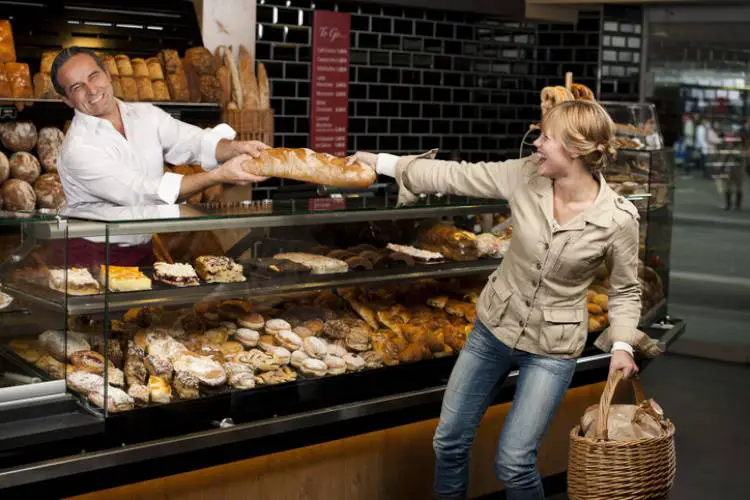How Regenerative Agriculture is Transforming the Future of Food Production in the Bakery and Snack Sectors
Regenerative agriculture is more than just a trend; it’s a revolution in how food is produced, focusing on restoring the environment, enhancing biodiversity, and improving soil health. In an era where consumers are increasingly demanding sustainable food products, the bakery and snack industries are leading the charge, utilizing regenerative agricultural practices to secure a greener future. Companies like Wildfarmed, Quinn Snacks, and Puratos are at the forefront, proving that regenerative agriculture is not just a solution for the environment but also a pathway to building resilient supply chains.
What is Regenerative Agriculture?
Regenerative agriculture is a holistic farming practice that seeks to reverse environmental degradation by improving the health of ecosystems. It utilizes techniques like crop rotation, reduced tillage, and cover cropping to restore soil health, increase biodiversity, and sequester carbon from the atmosphere. Unlike conventional farming, which often depletes soil nutrients and contributes to carbon emissions, regenerative agriculture actively restores the environment.
The bakery and snack industries are particularly well-suited for this transformation, as many of the crops used in these sectors, such as wheat, corn, and almonds, can be grown using regenerative methods. In addition to environmental benefits, regenerative agriculture reduces the need for synthetic inputs like fertilizers and pesticides, making it a more cost-effective solution in the long term.
Why Regenerative Agriculture Matters
As concerns about climate change and environmental sustainability continue to grow, regenerative agriculture is emerging as a crucial solution to these challenges. It does more than minimize harm—it actively improves ecosystems by rebuilding soil fertility, enhancing water retention, and promoting biodiversity. According to a report from Puratos, 64% of global consumers are now seeking products that are produced sustainably, and regenerative agriculture is playing a pivotal role in meeting these expectations.
One of the critical insights from Nestlé Professional’s recent report—Unlocking the Community Benefits of Regenerative Agriculture from Field to Fork—is that farms adopting regenerative principles are seeing substantial financial benefits. These farms have reported income increases of up to 49%, thanks to reduced input costs and stronger community connections. This highlights that regenerative agriculture isn’t just beneficial for the environment—it also makes economic sense for farmers.
Katya Simmons, Managing Director of Nestlé Professional UK&I, emphasizes the broader impact: “By strengthening local ecosystems, improving livelihoods, and fostering community resilience, regenerative practices can make a real, lasting impact.” This underscores the transformative potential of regenerative agriculture not only for the food system but also for the communities that depend on it.
Bakery and Snack Sectors: Leading the Charge
Several companies in the bakery and snack sectors are pioneering the adoption of regenerative agriculture, recognizing that sourcing ingredients from regenerative farms aligns with consumer preferences for environmentally friendly products. This shift is essential for staying competitive in a marketplace increasingly defined by eco-consciousness.
Wildfarmed: Pioneering Regenerative Flour
Wildfarmed is one of the most prominent names in regenerative agriculture within the bakery industry. Founded in 2019, the UK-based initiative works with over 100 farmers across the UK and France to grow wheat without the use of pesticides or herbicides. This approach promotes biodiversity and enhances soil health, ensuring that the flour produced is not only of high quality but also environmentally sustainable.
Today, Wildfarmed’s flour is used by over 500 brands, including well-known names like ASK Italian, Franco Manca, and Waitrose. From sourdough bread to pizza bases, Wildfarmed’s regenerative flour is helping to reshape the bakery sector, proving that sustainability and quality can go hand in hand.
Puratos: Partnering for Sustainability
Puratos UK has made significant strides in integrating regenerative agriculture into its supply chain. By launching sourdough products made from regeneratively farmed flour, Puratos has set a new standard for sustainability in the bakery industry. The company has partnered with UK farmers to grow crops like rye and spelt using regenerative methods.
As Francesca Angiulli, Puratos’ sustainability director, explains, the company has teamed up with cooperatives like Cultivae and Farm for Good to support farmers transitioning to regenerative practices. These collaborations not only ensure a sustainable supply chain but also provide farmers with fair compensation, making it easier for them to invest in regenerative techniques.
Quinn Snacks: Innovating in the Snack Sector
In the snack sector, Quinn Snacks is a leader in the regenerative agriculture movement. Known for its pretzels and popcorn, the Boulder, Colorado-based company has partnered with farmers like Steve Tucker, who grows sorghum using regenerative methods. “Regenerative agriculture not only improves crop health but also creates more resilient supply chains,” says Kristy Lewis, founder of Quinn Snacks.
The company is also part of the Soil Carbon Initiative, which encourages farmers to adopt regenerative practices that improve soil health and climate resilience. By focusing on crops like sorghum, Quinn is proving that regenerative agriculture can be applied across different types of farming, creating a more diverse and sustainable food system.
Regenerative Agriculture’s Broader Impact
The benefits of regenerative agriculture extend beyond the farm. By sourcing ingredients from regenerative farms, bakery and snack producers can reduce their environmental footprint, improve product quality, and build stronger relationships with consumers who prioritize sustainability.
Bertie Matthews of Matthews Cotswold Flour notes, “One of the benefits of a regenerative system is that the production costs for the farmers should be lower.” This reduction in costs comes from the decreased need for synthetic inputs like fertilizers and pesticides, making regenerative agriculture a more cost-effective and sustainable practice.
Moreover, regenerative agriculture improves the long-term viability of soil, ensuring a stable supply of high-quality ingredients for years to come. Bob Gladstone of Silvery Tweed Cereals adds, “Regenerative farming results in a broader mix of grains being grown and improves soil health,” further highlighting the resilience this farming method offers in the face of climate change and environmental degradation.
The Time for Action is Now
The bakery and snack sectors have a unique opportunity to drive positive environmental and social change by investing in regenerative agriculture. Not only does this practice offer a way to produce more sustainable and resilient food systems, but it also aligns with the growing consumer demand for products that are both eco-friendly and ethically sourced.
As Katya Simmons of Nestlé Professional UK&I aptly states, “Regenerative agriculture has the power to transform not only our food systems but also the communities they support.” The time for businesses to take action is now, and the rewards—both for the planet and for the industry—are clear.
Conclusion: A Sustainable Future for Food Production
Regenerative agriculture represents a fundamental shift in how food is grown, moving beyond sustainability to actively improve the environment. For the bakery and snack industries, adopting these practices offers not only environmental and economic benefits but also a way to meet the growing demand for sustainability from consumers. As companies like Wildfarmed, Quinn Snacks, and Puratos lead the way, it’s evident that regenerative agriculture is the future of food production—and it’s one that benefits everyone involved, from farmers to consumers to the planet.



